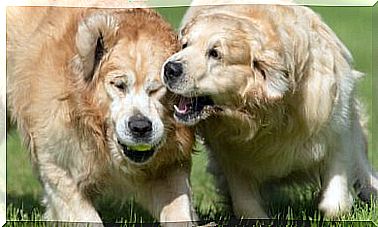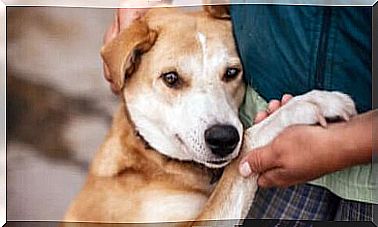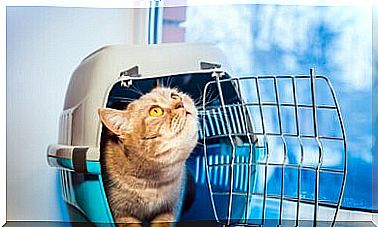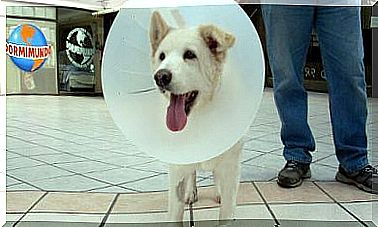Spots In Dogs’ Eyes: What They Are And How To Remove

Some dogs usually have brown, almost red, patches under the lower eyelids. You must be wondering why they arise, right? They are the product of the dog’s tears.
Furthermore, as wet fur is a breeding ground for bacteria and yeasts, they also help in the appearance of these “oxidized” spots.
Factors that contribute to the formation of blemishes in dogs’ eyes

If your furry best friend’s eyes water more than usual, you’re facing a condition called epiphora.
The profuse and constant tearing is due to an obstruction of the tear ducts as a consequence of inflammation or illness. In any case, a visit to the veterinarian is necessary to detect the source of the problem and determine the steps we should take to remedy it.
The first thing the veterinarian will have to assess is if the dog has an infection, if it is suffering from an allergy, if any dirt has entered the eyes or if the animal has any other changes in its eyes that may be causing a greater secretion of tears .
In these circumstances, he is likely to prescribe antibiotics or to unclog the drainage channels using a technique called “ flushing” . Only in very specific cases surgery will be necessary.
Among the factors that favor the formation of these spots, we can highlight:
The age
When puppies are at the stage when the teeth are growing, they have more acidic tears and, for this reason, it favors the reddish coloration in the area.
On the other hand, older animals also have them, but because their tear ducts tend to obstruct more than when they were young.
the race
Those breeds with big eyes, or also bulging eyes, are the breeds more prone to the spots. This is the case of the French Poodle (Poodle) and the Chihuahuas , which have an epiphora without necessarily having an increase in the production of tears or any inability to drain them.
Due to their excessively flat eye sockets, these dogs cannot contain the tears and, for this reason, they come out through the outer part of the eyelid.
The feeding
What a dog eats is critical in determining the composition of its tears. Sometimes, by changing the diet – the homemade food or some grain-free feed – the stains diminish or disappear.
hair obstructing the eyes
If the animal is very furry and always has hair over its eyes, it will surely generate more tears and, as a result, stains will appear.
In these cases, it is recommended to cut the hair of your face very carefully or take it to an animal beauty professional, or even secure it with a barrette.
The water
The “vital element” that comes out of the faucet usually contains many minerals that favor the formation of stains. Changing to filtered or bottled water may be the solution.
How to remove stains from dogs’ eyes

If your dog walks through life with blemishes under his eyes, your veterinarian can advise you on the best products to remove them. Anyway, you can try one of these options:
Clean your dog’s face daily with a washcloth wet with warm water.
In reality, this is a preventative method. The best way to rid your puppy of stains is to prevent them, since the daily hygiene of the area can contribute a lot to prevent them.
Use chamomile to help fight bacteria that are produced by your dog’s tears.
Sanitize your eyes and blemishes with a cotton wool soaked in a warm or cold infusion of this herb.
PH balanced
You can add a tablespoon of apple cider vinegar to your water or your food. You should start adding little by little, so that the dog gets used to the different flavor.
Use steel or ceramic drinking and feeding bowls
Metal or ceramic drinking and feeding troughs remain cleaner than those made of other materials. In general, to prevent the introduction of more bacteria or fungi, sanitize the bowls daily and change the water constantly.
Keep in mind that if you don’t treat your dog’s constant tearing problem, the blemishes will continue and his skin will suffer from chronic lacerations and irritations, which can become severe. So don’t overlook the problem and consult your veterinarian.
Image credits: Andres Atehortua.









